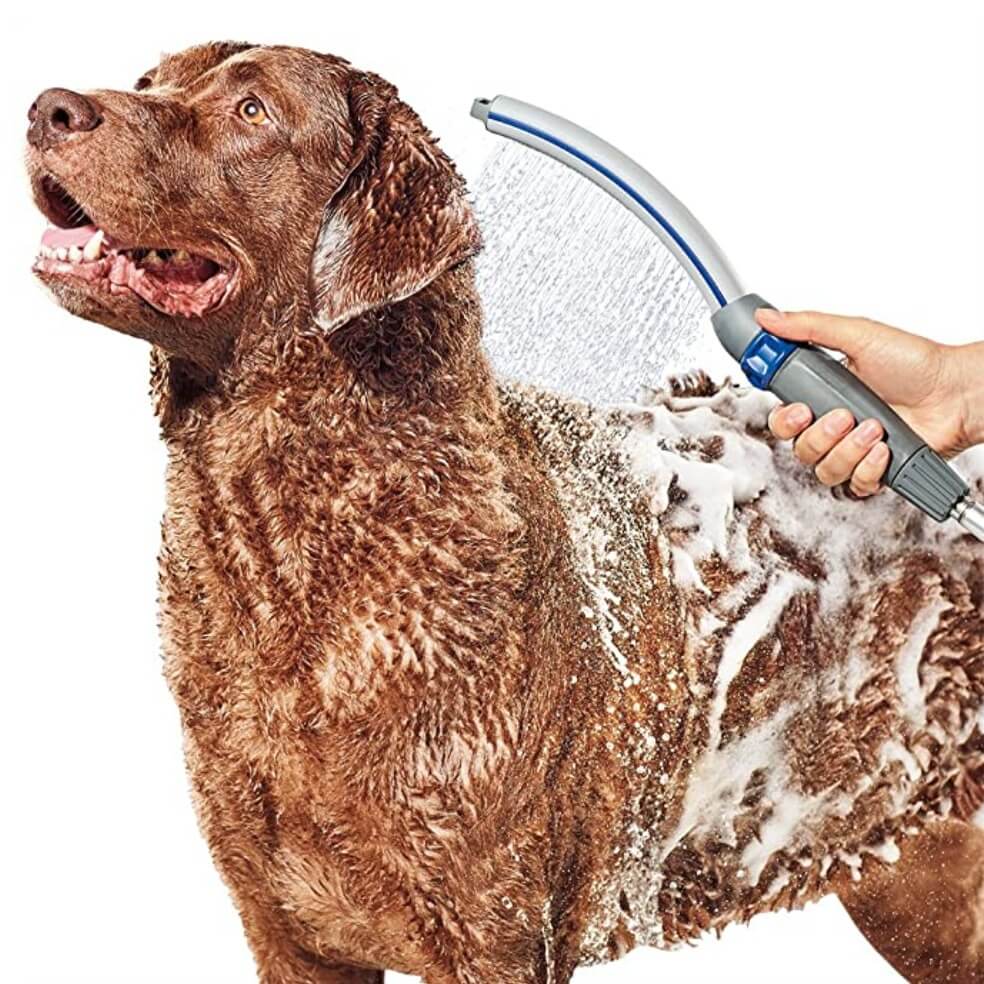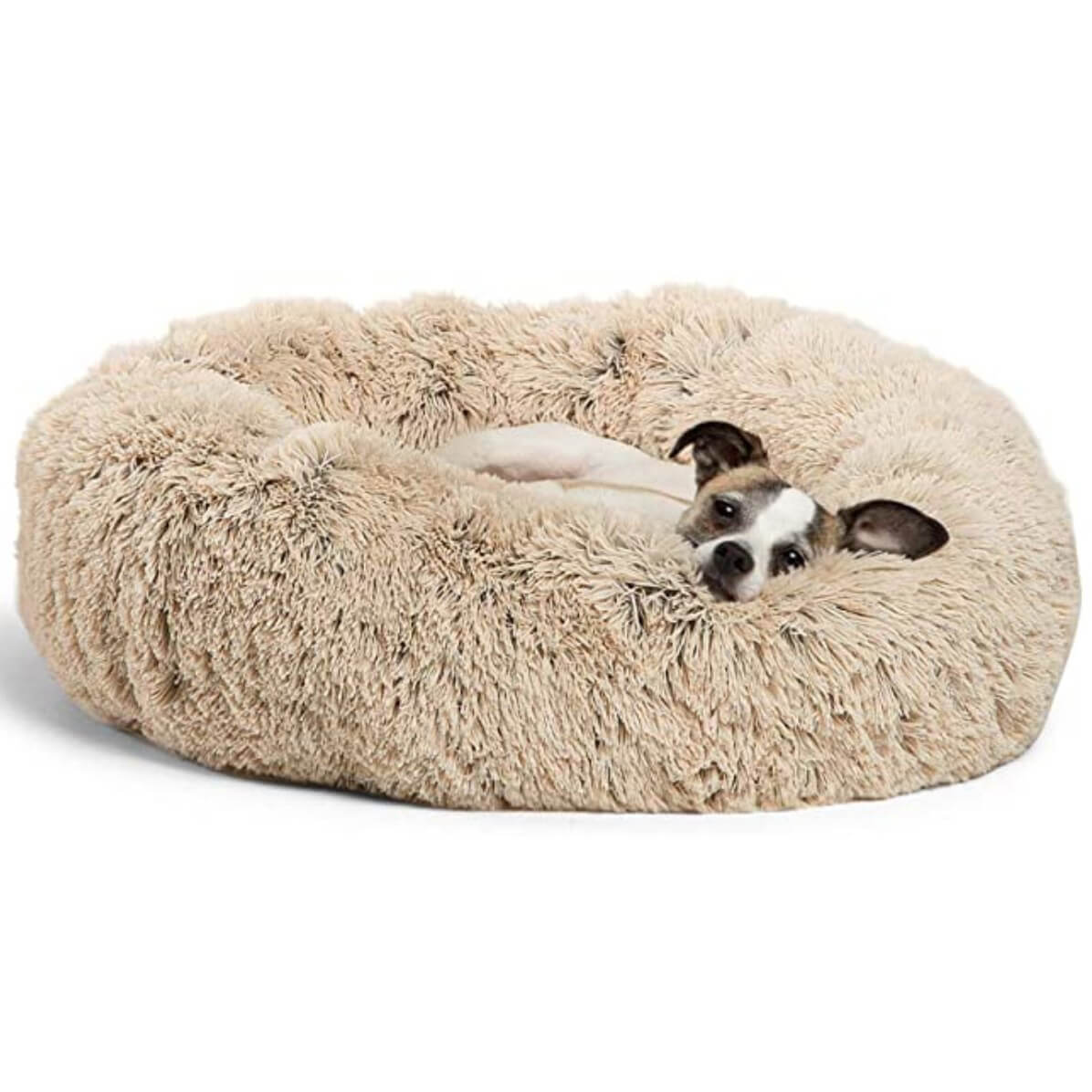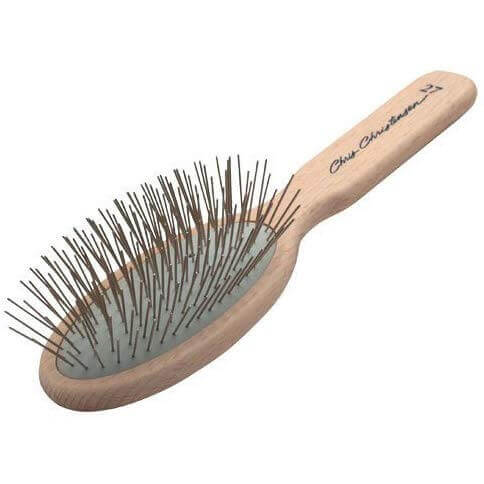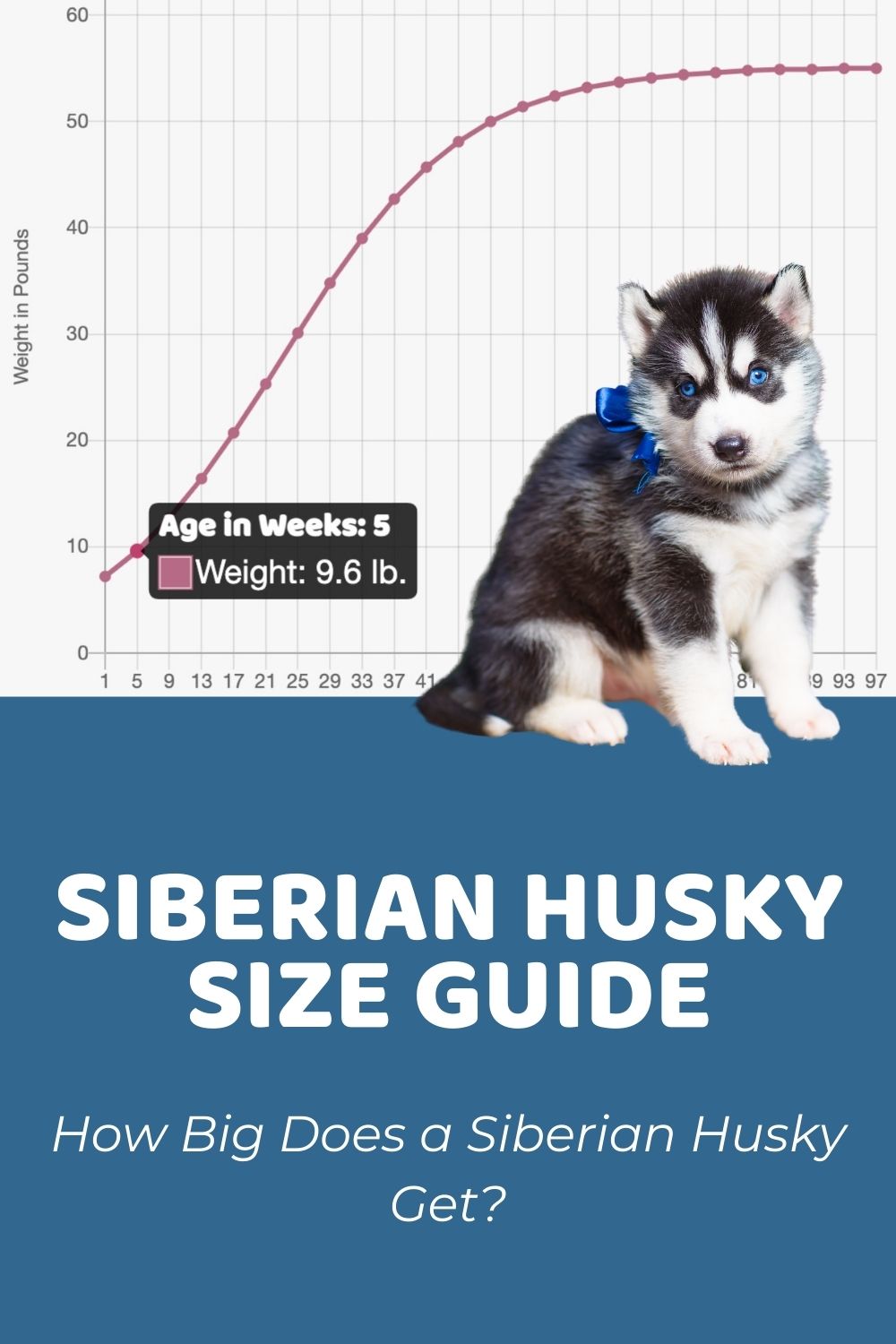
If you are thinking of taking on one of these stunning dogs, you may be wondering exactly how big Siberian Huskies get. Scroll down in this Siberian Husky size guide for the breed standards for size and details on just how quickly these dogs grow. If you already have welcomed a Husky puppy into your life, our super interactive puppy calculator can help you effectively predict their adult size.
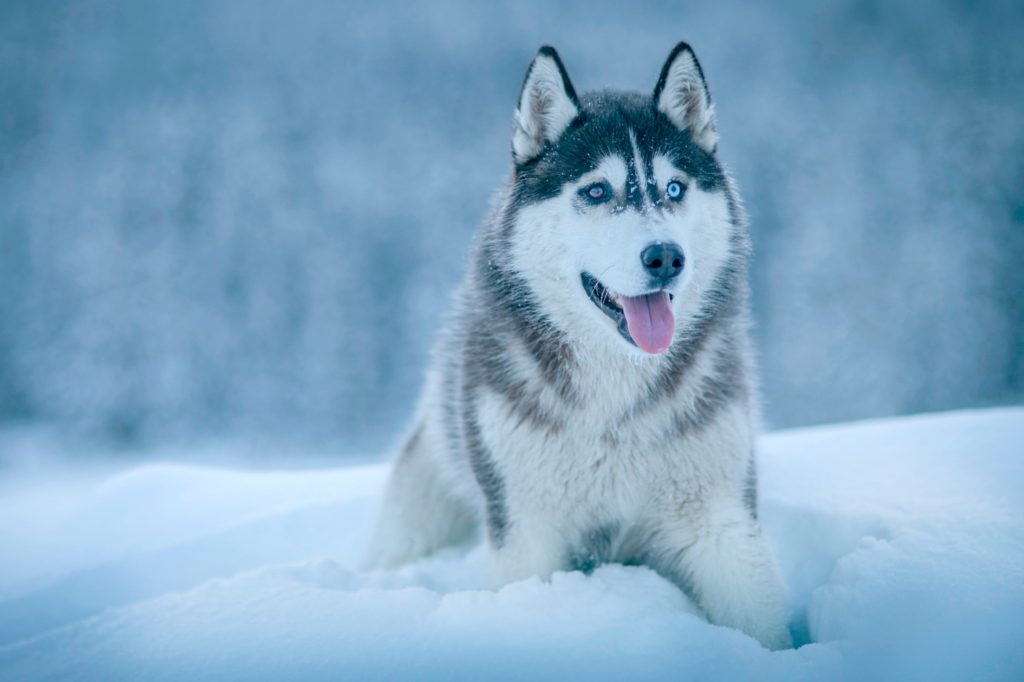
Our handy interactive puppy growth chart and calculator takes all the hard work out of predicting your puppy’s potential adult size. This helps you to know exactly what you are in for.
Psst! Check Out These Awesome Puppy Things!
Siberian Husky Size Predictions by Age
With their eye-catching coat and striking eyes, the wolf-like Siberian Husky is probably one of the most recognizable breeds around. People often purchase or adopt these dogs for their wild, spirited beauty without understanding the amount of work that goes into looking after these crafty canines.
Athletic, intelligent, and independent, Siberian Huskies were originally bred as working dogs, primarily for pulling sleds. They are often still used in this capacity. As such, they are incredibly high energy and need quite a substantial amount of exercise and play to prevent them from getting bored and digging up your garden, or escaping over the fence.
These dogs can be highly challenging for first-time owners. Despite their smarts, they are tough to train quite simply because they have no desire to please or impress their owner. They are also likely to want to test your position as head of the pack at every given opportunity. However, with a firm owner who understands their quirks, their gentle, friendly, and charmingly chatty nature shines through.
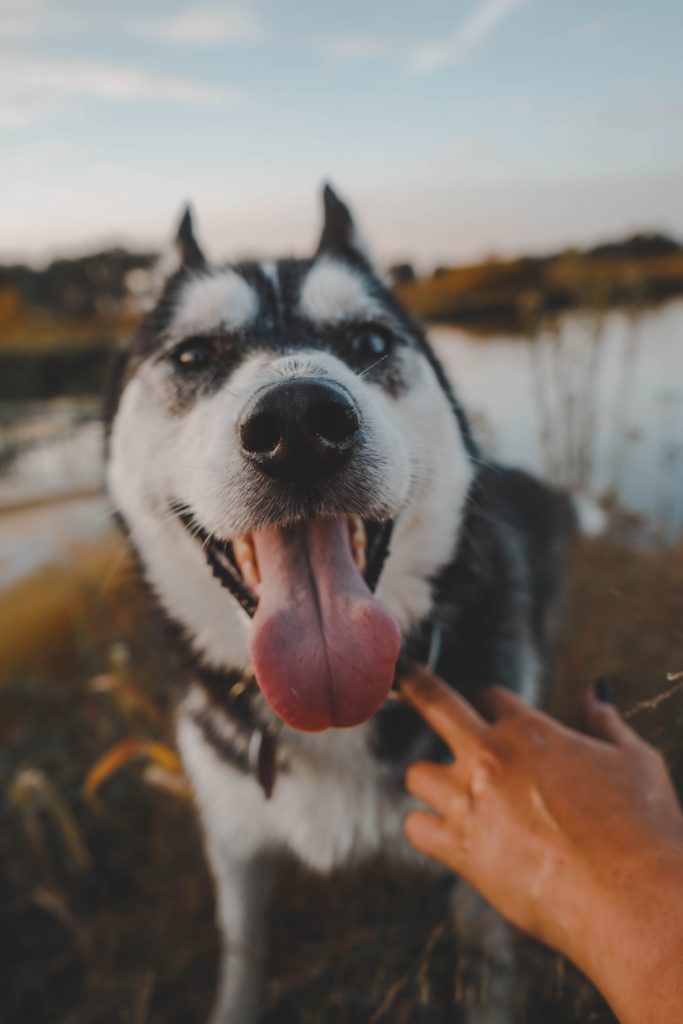
In terms of size, people often think of Siberian Huskies as much larger than they actually are – perhaps due to their impressive coat. In actuality, huskies are classified as medium dogs who can be pretty light and compact and don’t require all that much food to get by.
Check out the Siberian Husky’s adult size and how they grow across the first year of their lives:
| Age | 3 months | 6 months | 1 year | Adult |
| Weight | 18 – 30 lbs | 26 – 43 lbs | 34 – 57 lbs | 35 – 60 lbs |
| Height | 10 – 12 inches | 14 – 16 inches | 20 – 24 inches | 20 – 24 inches |
*When looking at these measurements, keep in mind that a dog’s height is not measured from the top of its head but from its withers. This is the point between their shoulder blades.
As you can see, Huskies can get to around 50% of their adult height and weight at just 3 months old and about 70% by 6 months. By 12 months, they have likely reached their full height but may continue to fill out until they are 18 months old.
Are There Different Sizes of Siberian Husky?
The Siberian Husky is just one branch of the Husky family that also includes breeds such as the Alaskan Malamute, the Samoyed, and the Miniature Husky. While some of these can be strikingly similar in appearance to the Siberian Husky, they are distinct breeds.
As with other large dogs, there has been some attempt to miniaturize Siberian Huskies. This mostly consists of pairing up the runts from various litters. However, some breeders have been known to match Huskies with much smaller dogs for a better and potentially healthier end result.
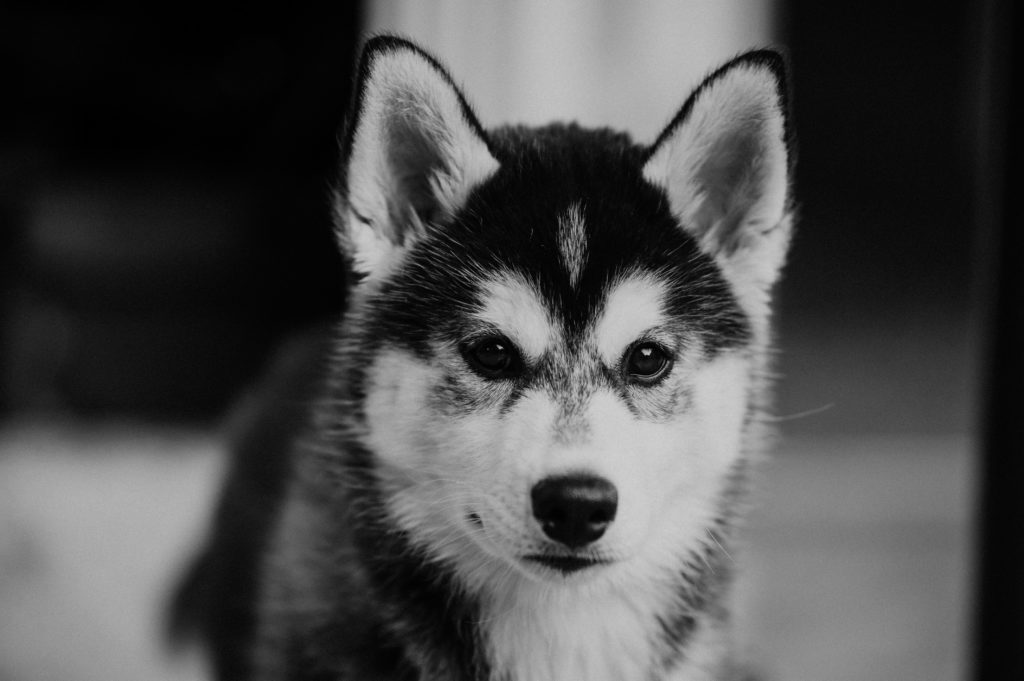
Miniature Huskies tend to stand at 12 to 16 inches at the shoulder and weigh somewhere between 15 and 35 pounds. They are, as you can imagine, quite popular. However, if you are considering getting one of these, make sure you are dealing with a reputable breeder.
Aside from this, there is also a size distinction between male and female Siberian Huskies. The average male is between 21 and 24 inches and weighs around 45 to 60 pounds. In contrast, the female is typically 20 to 22 inches and 35 to 50 pounds.
Siberian Husky Growth Patterns
Siberian Huskies are speedy growers in terms of their height, at least. They quickly shoot up in the first six months of their lives, reaching around three-quarters of their adult size by then and their full adult height by their first birthday. It may take them a little longer to attain their adult weight, however, as they can continue to gain muscle weight for up to 6 months beyond that.
Additionally, this is why it’s particularly important that your Siberian Husky puppy gets the correct nourishment he needs to grow that adorable little body into a healthy adult one. Check out these guides on best dog food for puppies here.
How Big is a Full-Grown Husky?
Your Husky pup’s potential mature size will depend on factors such as their gender and how big their parents are. If you can get this latter information from the breeder, more’s the better; it will help you understand where on the size scale they stand. Beyond that, you can approximate your pup’s adult weight by keeping a careful eye on their growth.
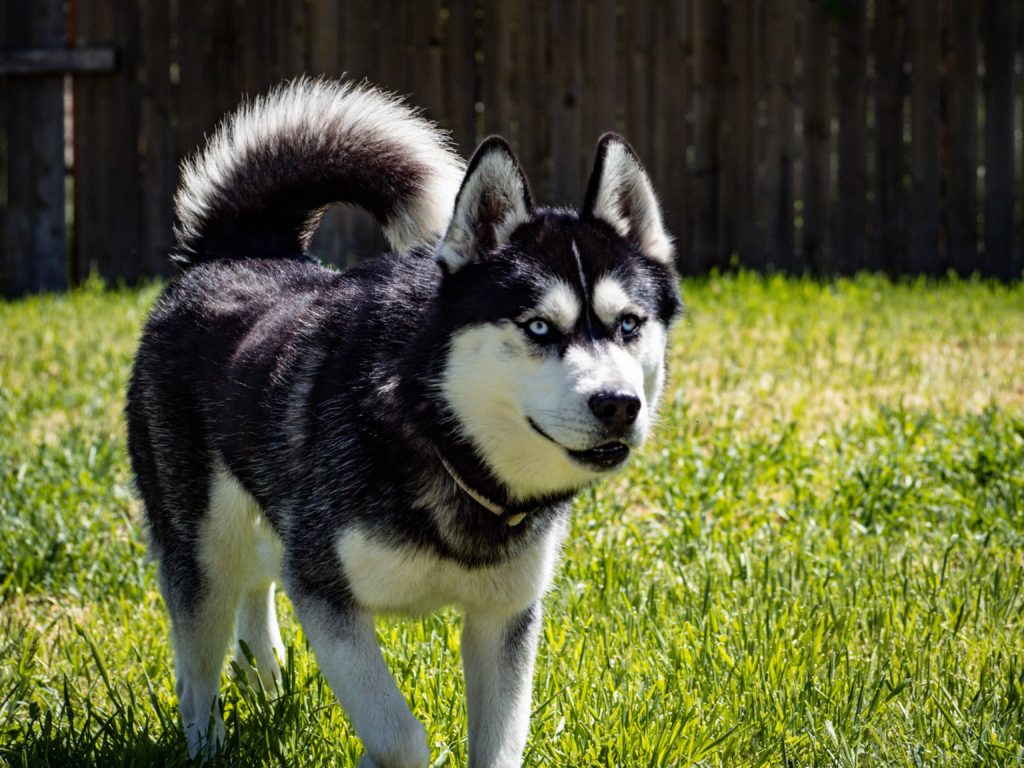
Siberian Huskies usually get to half their total weight around 3 months and their adult size at roughly 12 months. You can calculate their potential adult weight at 3 months by taking what they weigh at that age and multiplying it by two.
You can calculate their potential adult weight at 23 weeks by taking what they weigh at that age and multiplying it by two.
A different formula you could use is:
- Growth = current weight / current age in weeks
- Adult weight = Growth x 52 (number of weeks in one year)
So, for example, if your 12-week old pup weighs 18 pounds. You simply divide the current weight by their age in weeks and multiply the result with 52:
18/ 12 = 1.5
1.5 x 52= 78 pounds
78 pounds would be the expected weight of your adult-sized Siberian Husky.
What Age is a Siberian Husky Fully Grown By?
While a Siberian Husky will be at their full height by the time they are 12 months old, they will continue to grow until they are around 18 months. This is especially the case for males of the breed and naturally larger dogs. Don’t worry though, they are unlikely to significantly increase in size at this time as any growth outside of the first 6 months of their lives is much slower.
If you are thinking about adding a Siberian Husky to your family, there are many things to consider first. Not only will you need to ensure that you have the time to exercise them and care for their thick, sumptuous coat, you will also need to determine whether you have enough space in your home for them. The information included here will help you to do just that.
Pin It!



